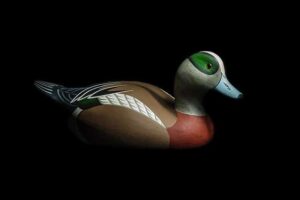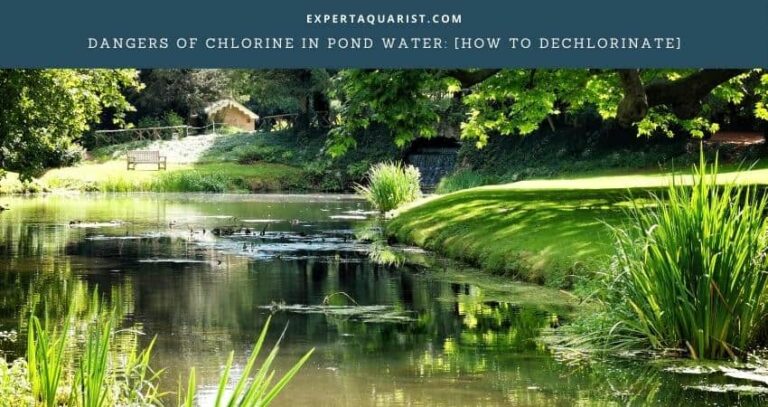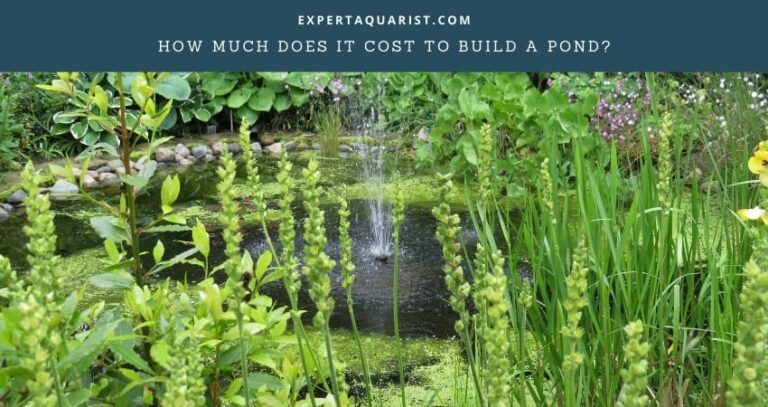There are many reasons why you’d want ducks to visit your ponds. First of all, they’re cute. Okay, okay, I’ll be serious now.
Ducks can get rid of problematic vermin like snails and insects [e.g. flies, tomato worms] by eating them.
Their feces can be used as manure in case you’re growing fruits and vegetables in your pond, which is quite popular nowadays.
You can even feed them weeds and keep your ponds safe naturally without using any herbicide. Talk about convenience!
For ducks to visit your pond, you must show them there’s enough food and security that they can live happily ever after. Wanna learn more about how to attract ducks to your pond? Stick with me and discover…
Smart strategies to attract ducks to your pond

Drawing ducks isn’t such a big deal; all you need to do is plan properly and be considerate. I have some practical ideas that you can follow, and you don’t need any significant investment or machines; just a clear head would do.
Here are my favorite strategies to attract ducks in a pond:
1. Have accessible water
The most common duck breeds like mallards or wood ducks like to be in shallow waters. A pond that has a depth of only a few feet or less is best for them.
For effortless movement, make sure to have slopes on the side of your pond, but don’t make them too steep; a little slope will do just fine.
Having shallow banks will allow aquatic plants to grow better; the same goes for marginal plants. In return, they’ll attract ducks for you.
For the best odds, I’ll suggest letting a part of your pond be six feet or deeper while other sections have shallow areas, this way, you can entice both dabbling and diving ducks.
During winter, a high-tech aeration system will be able to attract non-migratory ducks into your pond. How so? Because the turbulence created by the aerator will help circulate the water while keeping it unfrozen.
So, ducks will be able to drink and look for food.
2. Add plants
Plants provide hiding spots to protect themselves from hunters and harsh weather and look visually pleasing to ducks. It’s best to keep aquatic and terrestrial plants; this way, they’ll have ample cover on land and water surfaces.
Ducks like canvasbacks or redheads like to nest on floating vegetations on the pond. At the same time, teals prefer the ground with a fair amount of vegetation [like tall grass].
In my opinion, mixing them up and having plants like water lilies, cattails and grasses cover the most, because this way ducks will have shelter on land and water and you’ll be able to charm various kinds of ducks who are looking for nests.
If you think that is too much of a burden for you, then you need to figure out the native duck breeds and which of their preferred plants are readily available around you. Then, plant these in or around your pond to attract them.
3. Provide nesting opportunities

Just like people, ducks don’t settle for living in a place that’s not convenient for them. Nesting is essential for ducks, as such, they’ll reject any site that doesn’t have proper nesting conditions.
A good trick to pull some ducks to your yard would be having lots of vegetation, which I’ve already covered.
Another strategy is having them nest in cavities. Although this demands sophisticated digs off the ground, it’ll be worth it.
Wood ducks, goldeneyes, mergansers [excluding the red-breasted ones], buffleheads, and many more like to nest in cavities. See how many ducks you can attract with just a little digging?
Does your land have big trees with already existing cavities? Absolutely amazing! You’re fortunate.
Those who don’t have any such luck can build duck boxes and install them on trees or firm structures like poles. It’ll be best if they’re five feet above the ground or more with a distance of 100 feet, setting them apart.
You should take a serious look at whether the boxes are made of untreated wood or not. While treated wood can make fantastic furniture, it is a scary thing to have around livestock.
Because many of the treatments could be toxic for the birds, causing various illnesses and deaths.
Some ducks also make use of hollow logs, so you could try placing them or get a compact log and manually make a hole in it.
You could also try building a coop. Ducks would need proper ventilation and ample space to move around. A standard duck house is 8 feet x 5 feet.
4. Scare away predators
No one would like to live in a place where their lives are in constant danger. Ducks don’t have easy lives; they live in the wild facing the harshest weather and having to be always on their feet not knowing if this day is their last.
They have too many natural predators, such as raccoons, foxes, badgers, bobcats, etc. Sadly, that isn’t enough, as they also have to face the ultimate hunters- humans, who like to kill them for food or sport!
To keep wild animals away from ducks so that they can feel secure, you need to use various restrictions.
For example, you could use scent sprays to distract or deter animals. Another great idea is to have decoys and live traps. The best course of action in my eyes would be to have strong fences around the perimeter.
Also, keep your pets inside the house or at least put a leash on them as they could irritate the ducks.
In case you have nest boxes, it’s best if you place them on a metal pole while having a cone guard beneath the box so predators can’t access the box.
These ideas should provide enough security and keep your ducks safe from wild animals. As for humans, I’m pretty sure if a person trespasses into your property, you’re likely to be in more danger than your ducks. Beware!
5. Use duck decoys

Ducks are social creatures, and they depend on their sight a lot. They tend to flock together. So, taking their social nature into account, I’ve brought you a funny yet effective tactic.
If you place a pair of decoy ducks in the water, that’ll pique their interest, and are very likely to check your pond out, thinking it’s a habitat well suited for them.
By the time they realize their new buddy is fake, they’ll already be mesmerized by your surroundings; if your preparations for making them stay are appropriate.
The more decoys you’ll place, the higher chance of attracting the ducks, as fowls tend to feel secure in numbers.
I’ll give you a small tip, spread out your decoys. Some inside the pond, few in the banks, others scattered all over the yard to make your bluff look more natural. It’ll help lower the guard of the ducks.
6. Offer provisions
What do we do when we see a cute animal we’d like to pet? We give them food and water so they’ll trust us and open up. The same concept is behind this idea.
Ducks are popular for their appetite. They prefer eating snails and insects more than fruits or vegetables. So, to entice them, we need to get ourselves some of their favorite food.
Having crystal clear water encourages aquatic plant growth that brings aquatic snails and several insects; migratory ducks love to have them for lunch.
In case you want to add some plants for them to munch on, you can try adding chufa. Chufa is a breed of nutgrass that attract migratory birds.
Some ducks also love to eat plants like wild celery or widgeon grass. Additionally, ducks are attracted to rice. So, planting some Japanese millets is also worth a try.
Let’s not forget about water. Make sure there is clean drinking water, so the ducks don’t go thirsty and end up leaving your place to look elsewhere.
A little hospitality goes a long way.
Additional Tips
- Don’t use any kind of deterrents involving water or sound because they’ll scare the ducks away.
- Use owl decoys as larger decoys like coyotes would scare the ducks.
- In case you have fish in your pond, it’s best to keep ducks away from them.
- Minimize using herbicide or insecticides as much as you can.
- Adopt abandoned easter ducklings from parks or shelters, it’s a noble cause.
- The floor of the coop should be solid so predators can’t burrow in. Vinyl also works.
Welcome your new guests!
The stage is set. By now, you should have a clear idea about how to attract ducks in a pond. In case you want to relax and keep it simple- start by surveying your area and finding out what kind of ducks are seen there, then cater to their needs.
I’m confident you’ll be good friends soon enough. Wishing you good luck!






